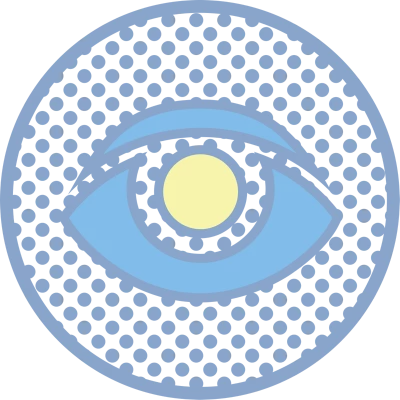What is Cortical Cataract?
Cortical cataracts begin at the edges of the lens and progress towards the center in a spoke-like manner, gradually affecting vision and causing hazy sight as they advance. A cortical cataract occurs in the edges of the lens – the cortex – hence the name cortical cataracts.
As the condition of the cortical cataract worsens, the light entering the eye is scattered, causing a hazy vision. Cortical senile cataract progress in two manners — they either develop slowly and stay the same for a long period or progress very rapidly.
There are two varieties of cortical cataract – posterior cortical cataract, and anterior cortical cataract.
Posterior cortical cataract is when the opacity develops in the layer that is right under the lens capsule. Similarly, anterior cortical cataract occurs in the front of the lens capsule, or inside it. It generally occurs due to a head or eye injury, rather than simply develop over time.
Some of the key symptoms for cortical cataract are:
-
Hazy vision
-
Severe glare from sources of light
-
Difficulty in telling similar colours apart
-
Difficulty in judging how far an object is placed
-
Possible double vision in the affected eye – monocular diplopia

Cortical Cataract Causes
Some of the key causes of cortical cataract are:
-
Progressing age
-
Any eye injury
-
History of cataract in the family
Risk factors of cortical cataract
Apart from the general causes, some of the risk factors which could to cortical cataract include:
-
Lifestyle diseases such as diabetes, hypertension
-
Severe myopia
-
Smoking

Cortical Cataract Prevention
While preventing the development of cortical cataracts may be difficult, you can reduce the risk factors by taking the following steps:
-
Stop smoking
-
Protect yourself from harmful UV rays while stepping out
-
Get your eyes tested regularly
-
Keep diabetes and other lifestyle-related disorders under check
Two Types of Cortical Cataracts
Cortical cataracts develop at the lens edges and progress inward in a spoke-like manner, scattering light and impairing vision. This progression often causes colour distortion, glare sensitivity, and gradual loss of sharp visual clarity.
Posterior cortical cataracts form beneath the lens capsule, significantly affecting vision by increasing glare and reducing clarity, especially in bright light or at night-time, making them more visually disabling than other cataract types.
Posterior Cortical Cataract
If you or someone close to you has developed a cortical cataract, don’t delay in seeking expert care. At Dr Agarwal’s Eye Hospital, our renowned specialists and experienced surgeons provide advanced, personalised cataract treatments supported by decades of clinical excellence.
Anterior Cortical Cataract
While surgery is the definitive treatment for advanced cortical cataracts, early stages can sometimes be managed with prescription glasses, depending on the cataract’s progression and as advised by ophthalmologists.
Cortical cataract diagnosis
A doctor looking to treat a person for cortical cataracts will undertake three tests predominantly.
These are:
-
Visual acuity test:
Also known as the generic ‘reading test’, the test requires the patient to read a set of letters in varying sizes from a fixed distance.
-
Slit-lamp exam:
The doctor uses a special microscope-like device with a light on it to examine different parts of the eye – the cornea, iris, and the lens, which is where the cataract is bound to develop.
-
Retinal exam:
The doctor administers drops into the patient’s eye to widen the retina. Once the eyes are adequately dilated, the doctor examines the retina along with the cataract to detect any abnormalities.
Cortical Cataract treatment
While surgery is often the chosen for cortical cataracts treatment, early stages of the disorder can be managed with prescription glasses. Getting spectacles with a stronger lens will help make the vision better for a while.
Many patients experience a rapid decline in vision when surgery is delayed, which may lead to complications like glaucoma or increased difficulty in daily activities. While there are several kinds of procedures to resolve cataract, the method in every procedure remains the same — the cloudy lens is replaced with a normal lens to make the vision clearer. The procedure usually lasts 15 to 20 minutes and does not require admission to a hospital.
If you or someone close to you has developed a cortical cataract, do not put off an eye test. Walk into Dr. Agarwal’s Eye Hospital for an appointment with top specialists and surgeons in the field of eye care. Book an appointment now. For Cortical Cataract Treatment and other Eye Treatment.
Frequently Asked Questions (FAQs) about cortical cataracts
What are the typical symptoms of cortical cataracts?
Typical symptoms of cortical cataracts include blurred vision, glare, difficulty seeing in bright light, and changes in color perception.
How do cortical cataracts develop in the eyes?
Cortical cataracts develop when the lens of the eye undergoes changes in the lens cortex, resulting in opacity or cloudiness.
Are there any risk factors associated with cortical cataracts?
Risk factors associated with cortical cataracts include aging, diabetes, smoking, prolonged exposure to sunlight, and certain medications like corticosteroids.
What distinguishes cortical cataracts from other types of cataracts?
Cortical cataracts are distinguished by the presence of opacities in the lens cortex, which can appear as wedge-shaped or spoke-like patterns radiating from the periphery of the lens towards the center.
What Diagnostic Procedures are Used to Identify Cortical Cataracts?
Diagnostic procedures used to identify cortical cataracts include visual acuity tests, slit-lamp examination, and dilated eye examination by an ophthalmologist.
What treatment options are available for cortical cataracts at Dr Agarwals?
Treatment options for cortical cataracts at Dr. Agarwals may include prescription eyeglasses, contact lenses, or surgical intervention such as phacoemulsification with intraocular lens implantation.
How Long Does It Take to Recover from Cortical Cataract Surgery?
Recovery from cortical cataract surgery typically takes a few weeks. Most patients notice improved vision within days, but complete healing and stabilisation of eyesight may take four to six weeks.
This information is for general awareness only and cannot be construed as medical advice. Recovery Timelines, specialist availability, and treatment prices may vary. Please consult our specialists or visit your nearest branch for more details.Insurance coverage and associated costs may vary depending on the treatment and the specific inclusions under your policy. Please visit the insurance desk at your nearest branch for detailed information.

Do not ignore eye trouble!
Now you can reach our senior doctors by booking an online video consultation or a hospital appointment
Book an appointment now